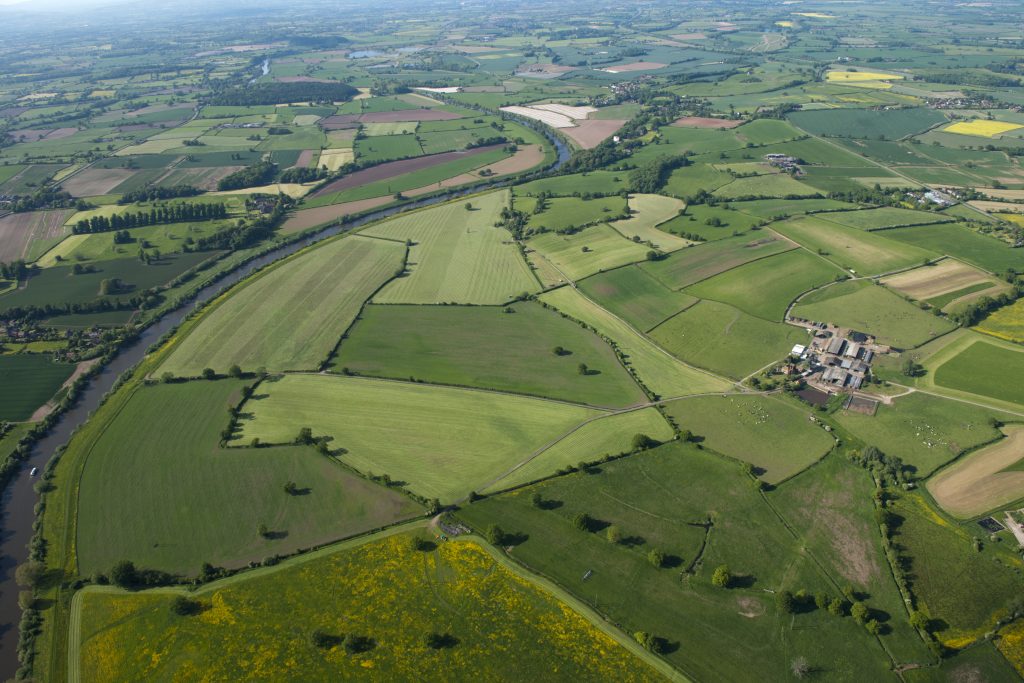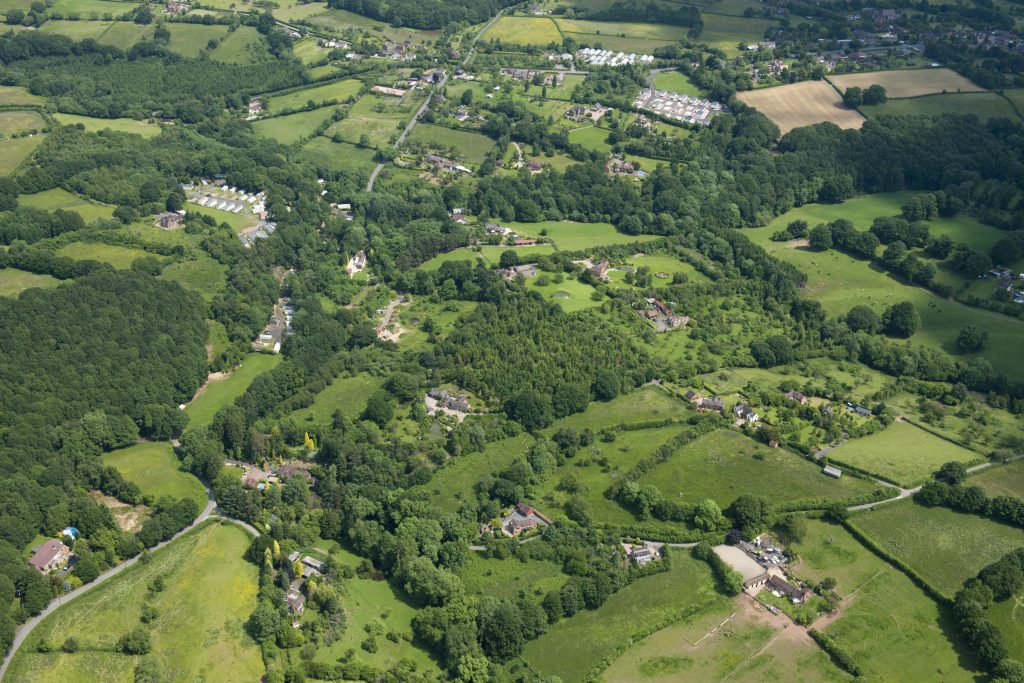Treasures from Worcestershire’s Past: ~31~ Field Barns and Outfarms in Worcestershire
- 27th June 2014
This week Emily Hathaway, Historic Environment Countryside Assistant, has chosen Worcestershire’s field barns and outfarms as her Treasure:
The significance of field barns and outfarms in the Yorkshire Dales and Derbyshire is well recognised; you may not, however, automatically associate Worcestershire with these often humble but highly distinctive buildings. Field barns and outfarms are farm buildings, set within the fields, at a distance from the main farmstead. They may have historically been used as shelters for cattle or sheep, threshing barns with yards or combination barns, with a threshing bay, storage for the crop and housing for cattle.
A small, isolated field barn, for grazing stock (historically cattle), dating to approximately 1830, at Pound Green Common in Upper Arley. © Worcestershire County Council
One of a number of outfarms north of Kemerton, incorporating a threshing barn, animal housing and a yard for the collection of manure © English Heritage NMR 27767_010
The mapping of farmsteads, outfarms and fields barns, as part of the English Heritage and Advantage West Midlands funded ‘West Midlands Historic Farmsteads and Landscapes Project’, has demonstrated the importance of field barns and outfarms in both a historical sense and as integral features of the 19th and 20th century Worcestershire landscape. Mapping has highlighted particular concentrations of field barns and outfarms in areas with high levels of fruit production and market gardening, such as in the Teme Valley and around Pershore, demonstrating the importance of manure to the expanding orchard industry during the 19th century, and in the arable lands of the south east, where nucleated settlement is prevalent. The majority of extant field barns and outfarms are dated, from cartographic sources, to the 19th century, walking round the landscape, however, it is clear that some earlier examples survive and further research is needed to ascertain better dating evidence across the county.
The distribution of traditional outfarms and field barns in early 20th century Worcestershire, mapped as part of the West Midlands Historic Farmsteads and Landscapes Project.
The fields in this landscape north of Kemerton mostly result from the post-medieval enclosure of strip fields around the settlement, where most of the farmsteads continued to be sited into the 19th century. Some clearly retain the curved boundaries of these medieval strips and others reflect the reorganisation of the farmed landscape with enlarged fields and regular boundaries. These village-based farmsteads were also served by field barns and outfarms which are shown in the foreground. © English Heritage NMR 27761_017
The fields in this landscape north of Kemerton mostly result from the post-medieval enclosure of strip fields around the settlement, where most of the farmsteads continued to be sited into the 19th century. Some clearly retain the curved boundaries of these medieval strips and others reflect the reorganisation of the farmed landscape with enlarged fields and regular boundaries. These village-based farmsteads were also served by field barns and outfarms which are shown in the foreground. © English Heritage NMR 27761_017 Field barns and outfarms are extremely vulnerable to dereliction once redundant, the widespread introduction of artificial fertilisers, bale silage production and the centralisation of farming activities being key factors in their abandonment, consequently these unassuming buildings are fast becoming part of memory. Of the 977 outfarms and field barns currently recorded in Worcestershire, 72% have been completely lost from the landscape or demolished and replaced with modern sheds, since the turn of the 20th century. A significant proportion of those which survive appear, on aerial mapping, to be redundant and falling into disrepair. Few are listed reflecting the fact that they have long been undervalued both as historic buildings and for the contribution they make to historic landscape character.
It is clear that many field barns and outfarms are no longer suitable for their original purpose, forcing the question ‘what future use do they have?’ Some may provide suitable storage facilities for hay or farming implements, others important shelter for wildlife (including barn and little owls, bats, small mammals and insects) or educational facilities, others may be suitable for residential or commercial conversion.
Traditional outfarms and field barns, like farmsteads, are heritage assets which make a significant contribution to landscape character and local distinctiveness, recent studies have also demonstrated the economic value of high quality conserved landscapes, in terms of local jobs, tourism and inward investment. New uses which both enhance and are sensitive to historic character and significance are to be encouraged, without this another piece of our agricultural history may disappear from the landscape all together.
More information on Historic Farmsteads and Landscapes Project can be obtained from the Historic Environment Record or from the following websites:
https://historicengland.org.uk/images-books/publications/wm-county-summaries/worcestershire-county/

A large scale, isolated farmstead, east of the River Severn. Less than 50% of traditional buildings remain extant, mirroring the loss of field boundaries which has also characterised the surrounding landscape over the 20th century. Photo © English Heritage NMR 27698/033

Small-scale farmsteads and smallholdings, associated with the development of rural industries from the 17th century and fruit growing, which boomed during the 19th century, in Buckridge, Wyre Forest. Photo © English Heritage NMR 27765/001




A very informative and interesting read, would be nice to have buildings of such history and character in NZ….